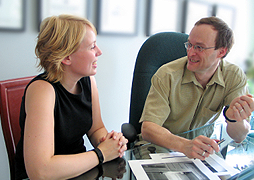I hope you have enjoyed this little vignette about meeting preparation. I have spent lots of time in meetings. I work in an organization that has a highly collaborative culture, and that leads to lots of in-person face-to-face meetings.
Over the years I’ve learned that in order to have effective meetings, there needs to be some preparation done.
I want to add this resource: The Modern Meeting Standard Al Pittampalli has a ton of resources around this and it has been his focus. His view is slightly different than mine, but we agree on many, many things.
There are only two basic types of meetings:
Information sharing meetings And Decision making meetings
Everything else can be boiled down to some variant or combination of these two.
The key to a successful meeting is to spend as little time as possible to share the information or make the decision. That is the goal. That is always the goal. There is never a different goal.
To that end, there are a couple of things to consider:
- The amount of time you plan to spend says a lot about the pace of the meeting. If you want the meeting to take less time, plan to accomplish the meeting objective in less time.
- That assumes you have a clear objective for your meeting. Right?
- That you have a plan to accomplish that objective. This plan is usually called an agenda, which is Latin for “to do list” – seriously, look it up.
- The necessary people are present. Which implies that no unnecessary people are present. The more people in the room, the more time it will take, and the more (of everyone’s) time you will spend.
Remember the key to a successful meeting – starts with spending as little time as possible.
Information sharing meetings
The key to information sharing is knowing what information, to which audience, for what purpose. So start with purpose.
- Why does this audience need to know this information?
- What actions is this information going to inform?
- How does knowing this stuff help them?
- What response are you looking for?
- Feedback?
- Acknowledgement?
The sad part of information meetings is that often, we could simply share the information and let people consume it on their own. The problem is that often, left up to their own devices, people simply will not read or watch or listen. Thus, the meeting is as much about holding them accountable for information that was presented as it was about informing.
Decision Making Meetings
The key to decision making meetings is first knowing what decisions are required, who can / should make those decisions, and how they will make them. But people don’t really like to make decisions, so decision meetings are really about urgency. What is the impact of not making this decision? This is known as the cost of delay.
- Why does this decision need to be made?
- What work is “queued up” waiting for this decision to be made?
- When does it need to be made?
- Who needs to contribute to the decision?
- What is their contribution?
- Who needs to be communicated to, once the decision has been made?
- Why do they need to know, what actions will it inform?
If you are coordinating or facilitating decision making meetings, the priority of the meeting and the urgency of preparing for the meeting as all related to the cost of delay. This information is always important to the decision maker and all of the contributors.
I have read articles that talk about 4 or 6 types of meetings, but I think they are all back to these two or some combination of the two. See if this mapping resonates with you:
- Training or Skill Building – I think these are largely information sharing meetings, often with a retention or comprehension diagnostic at the end.
- Innovation or Brain Storming – These are decision making meetings, where the decision directly informs the output/outcome of the meeting. Often the decision maker appears to be the whole group, because they feel very collaborative. Often, one participant can be deemed the decision maker for the purpose of the meeting and she can break a tie vote or keep the pace of the meeting going.
- Problem Solving – Problem solving meetings are also collaborative, but they have a large information sharing component and a decision that is often a sequence of proposed solutions (what to try in what order).
- Workshops – These are almost all decision making meetings, but the decision is largely – [when] is the work product “good enough” for some other activity to take place. These often are product, plan, or presentation development sessions. They are often held with some regularity.
- Client or Sales Meetings – These are always decision meetings – your client is always the decision maker. And there are almost always some information sharing components – but the pace and depth of that content must be focused on enabling the decision. If you don’t know what decision you want your client to make, start with keeping you as a supplier.
- Team Building – Team building meetings are often more of an event than a meeting. There are information sharing components, and maybe some collaborative, cooperative, or competitive activities.
On Meeting Agendas
Since every meeting has a slightly different objective or goal, and the key to success is to accomplish the goal in as little time as possible, then the plan to do that will be determined by the objective. Like any other planning exercise, it is often helpful to work backward from the goal to get the steps or information required.
Also remember that all of the work doesn’t have to be done with everyone together in the meeting. In fact, the meeting will go a lot smoother, if as much work as possible is done before the meeting. Part 3 of this series has an example or explanation of this for a decision making meeting. So go ahead and create the agenda, then go back and decide which of those things can get done before the meeting. Move those from the agenda to the meeting prep, and everyone will have a better meeting experience.


